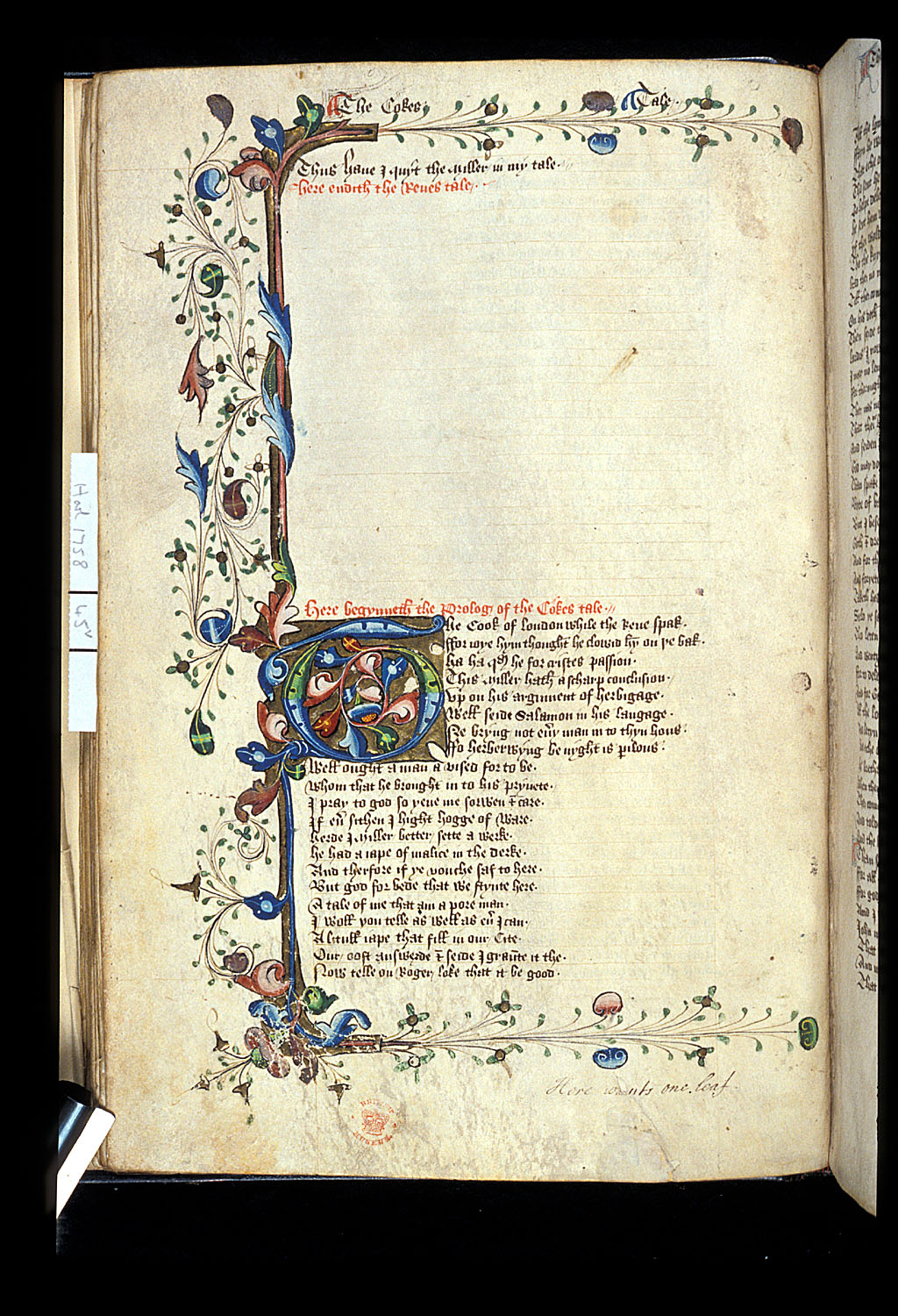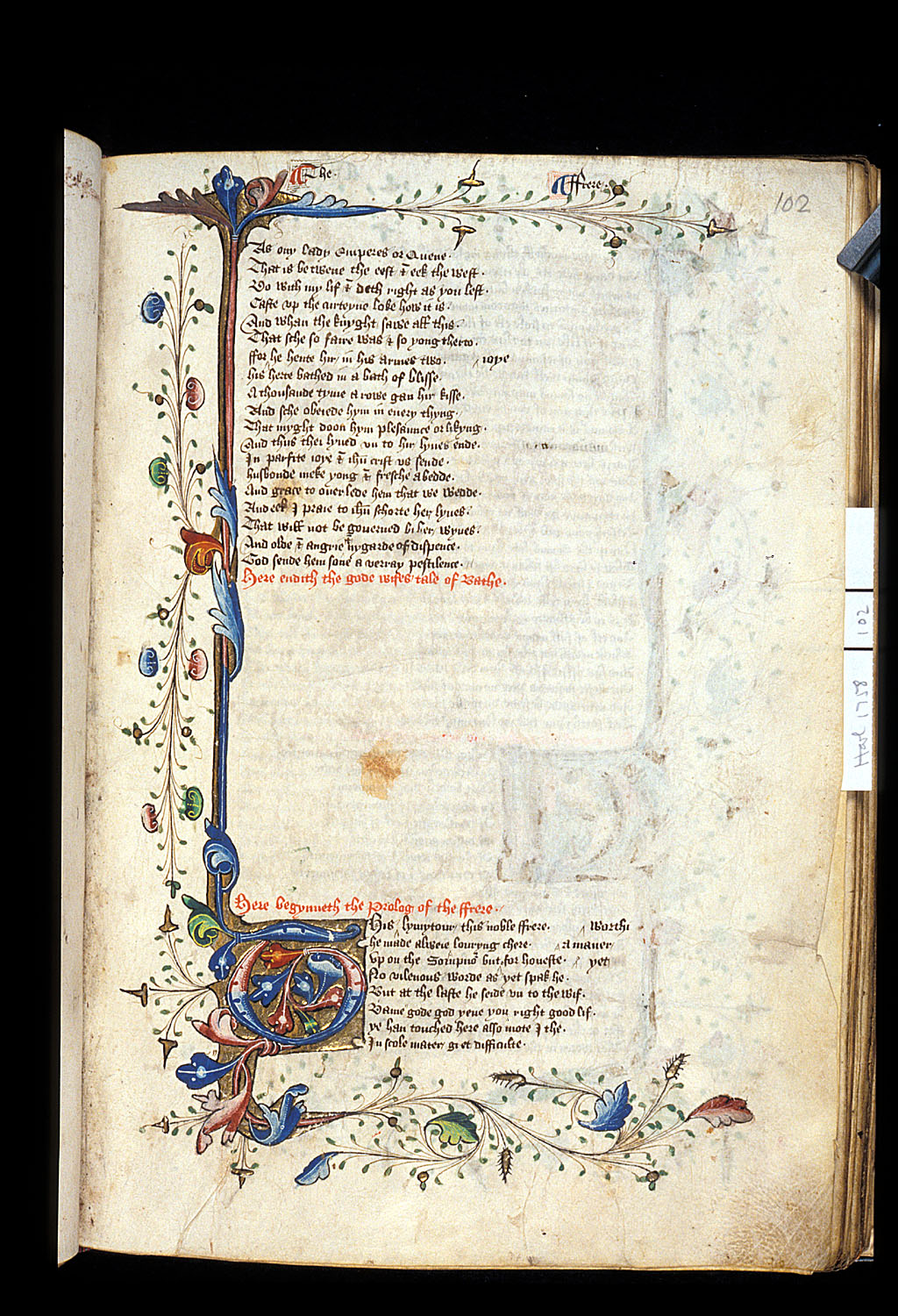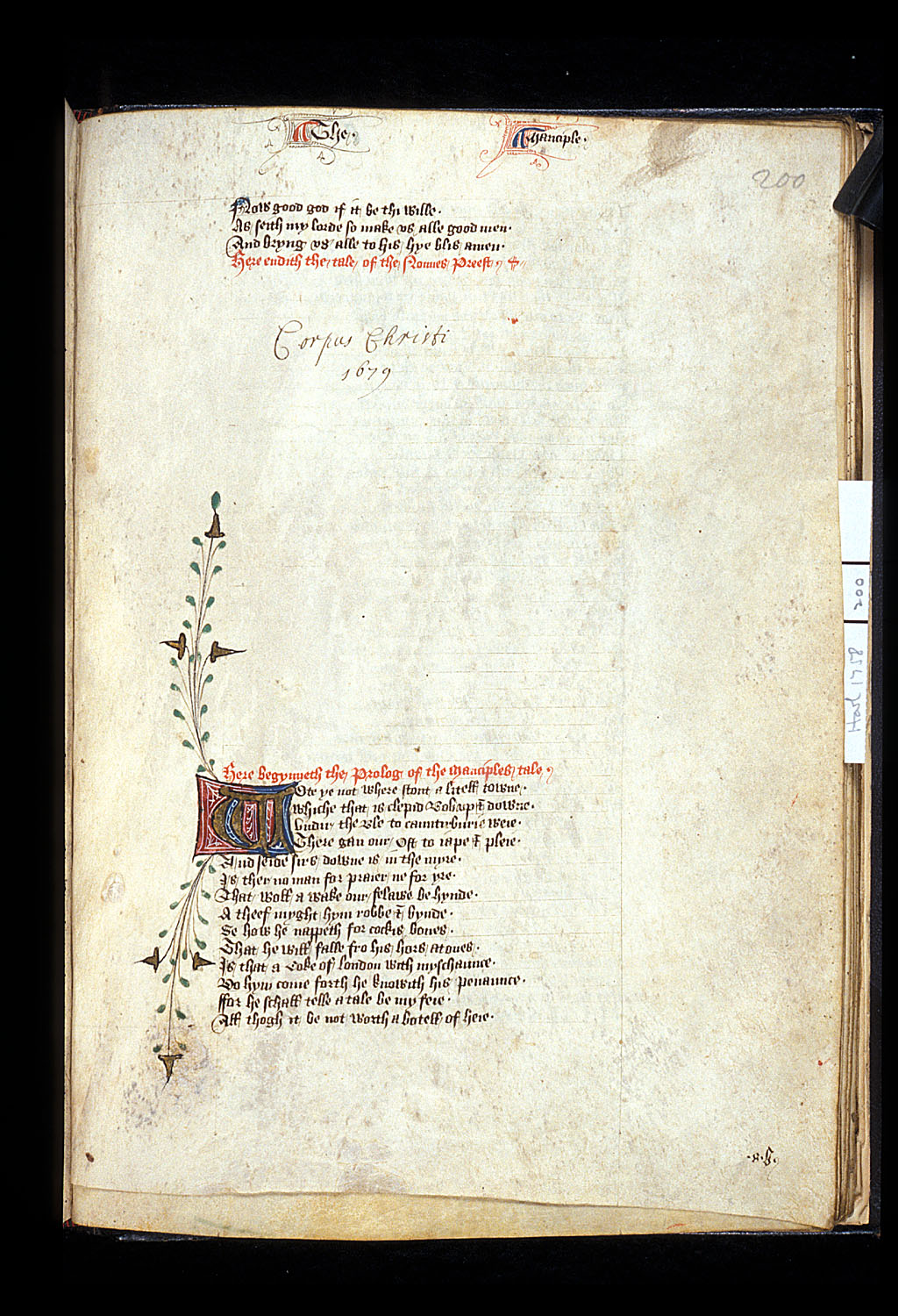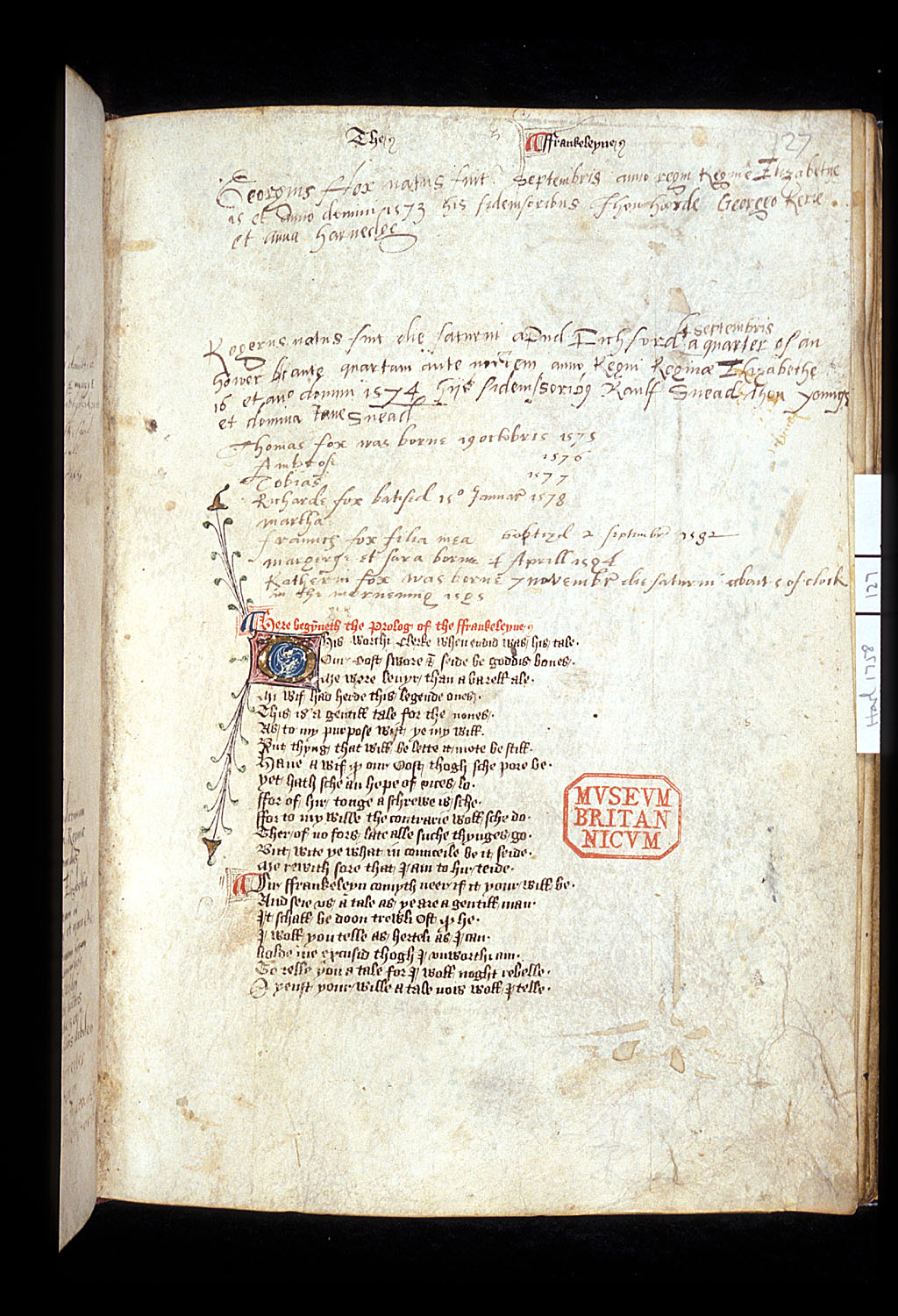For this school year’s exciting inaugural post, Maidie Hilmo shares her request for a scientific analysis of the Pearl-Gawain manuscript (British Library, MS Cotton Nero A.x), containing the unique copy of the Middle English poems: Pearl, Cleanness, Patience, and Sir Gawain and the Green Knight. It shows the kind of questions that help gain access to the viewing of original manuscripts and can result in a technological investigation of specific details. Bringing together science and art history, Hilmo has uncovered evidence that “the scribe was also the draftsperson of the underdrawings. It appears that the painted layers of the miniatures were added by one or more colorists, while the large flourished initials beginning the text of the poems were executed by someone with a different pigment not used in the miniatures.” The results of this request to the British Library—comprising the detailed report on the pigments by Dr. Paul Garside and a set of enhanced images by Dr. Christina Duffy, the Imaging Scientist — will become available on the Cotton Nero A.x Project website and, selectively, in publications by Hilmo, including: “Did the Scribe Draw the Miniatures in British Library, MS Cotton Nero A.x (The Pearl-Gawain Manuscript)?,” forthcoming in the Journal of the Early Book Society; and “Re-conceptualizing the Poems of the Pearl-Gawain Manuscript,” forthcoming in Manuscript Studies. To learn more, check out her special project here on our site.
Walking at Night: Scribal Variants, Poverty, and Prostitution in a Piers Plowman Manuscript
In one of the most moving additions to the C-text of Piers Plowman, Langland highlights the plight of impoverished mothers, who are some of the most vulnerable and underrepresented figures of his society:
And hemsulue also soffre muche hunger
And wo in wynter-tymes and wakynge on nyhtes
To rise to the reule to rokke the cradel,
Bothe to carde and to kembe, to cloute and to wasche. [1] (77-80)
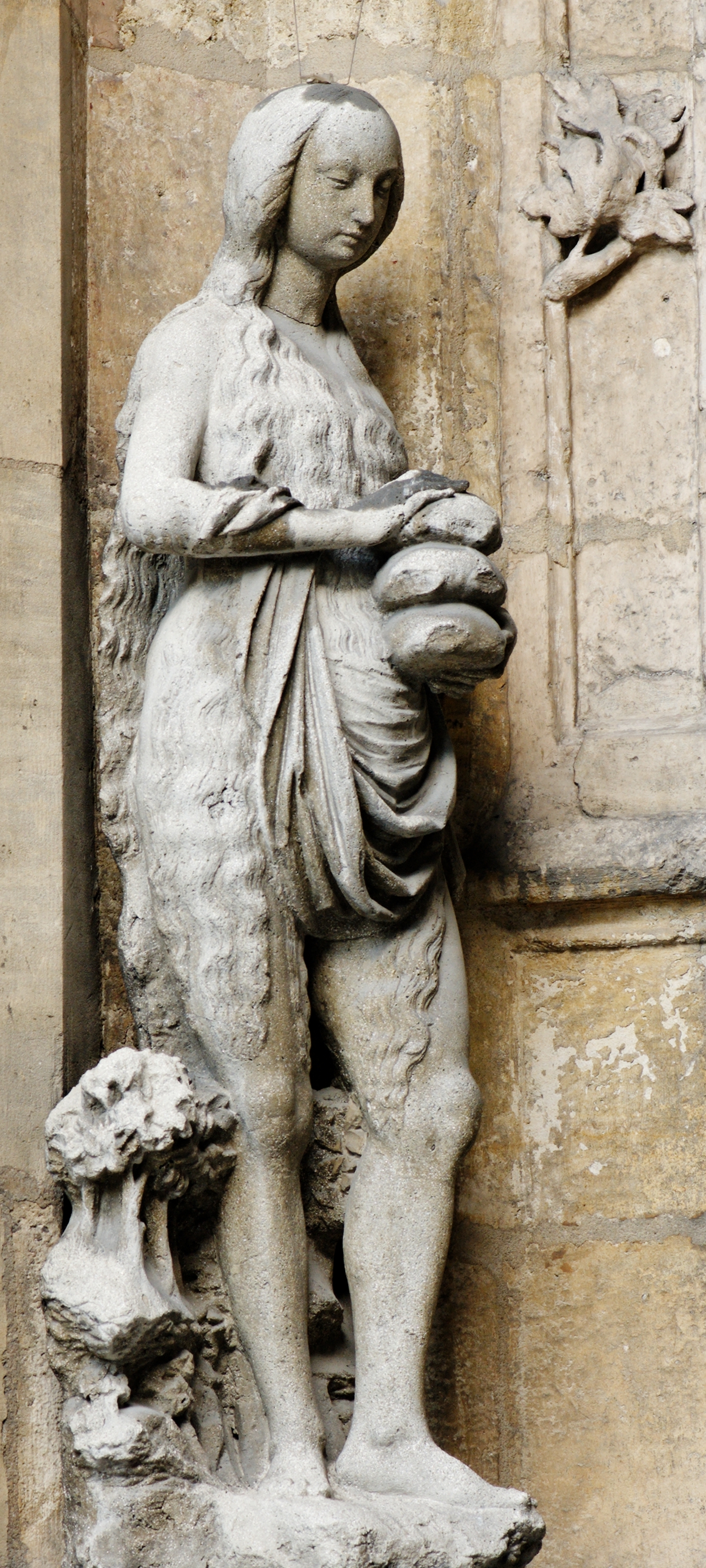
Though these lines form only a part of Langland’s snapshot of working-class women, they poignantly convey the life of a working mother as she sacrifices her own well-being to feed her children, obeys the regulation of an infant’s nocturnal feeding schedule, and takes in domestic labour to make ends meet.
The passage excerpted above has been passed down through the Pearsall edition of the C-Text, but a little digging into the scribal variants across different manuscripts opens up a realm of possibilities for additional layers of meaning that could be added to the text. The scribe of the Cambridge University Library Dd. 3. 13 manuscript invokes a particularly intriguing possibility when he writes that these women were not “wakynge on nyhtes,” but “walkynge on nyhtes.”
‘Walking at night’ was associated with all sorts of immorality in medieval England, summed up in Chester Mystery Cycle when Jesus declares that “whosoever walketh abowte in night, hee tresspasseth all agaynst the right.”[2] Night-walking is specifically associated with sexual immorality by the Wife of Bath when she excuses her own desire to walk at night by saying that she is doing so to see the “wenches”[3] that her husband sleeps with (III l.397-398). Religious and secular legal discourses indicate that there was little distinction made in medieval England between women of “loose morals” and those who were involved in prostitution.[4]
In the Cambridge manuscript, then, there is a possibility that at least one scribe allowed for a moving portrayal of women forced by economic necessity into prostitution, even if he retain associations of immorality. Canon law made no allowances for such a thing, as the church viewed extreme poverty as a condition that led a woman into a life of prostitution, but not a mitigating factor.[5] On the level of the particular scribe, however, the addition of a single letter pushes us to consider the possibility that at least some readers could understand shades of complexity in a practice that is otherwise condemned, even by Langland himself.
When it comes to a poem with such a complex and enigmatic textual tradition as Piers Plowman, each manuscript bears an important witness to the text. Each scribal variant might get us a little closer to an authorial reading, but it also might give us insight into the ways the text could be misread or misunderstood by scribes and readers. Even if the reading in the manuscript bears little or no resemblance to Langland’s poetry, it may be the product of a scribe “elucidating the sense and significance in a text according to the priorities of their own period and culture.”[6] Even when a misreading is simply an error on the scribe’s part, it provides an example of how some medieval readers might have encountered and interpreted the text in ways that complement or contradict the authorial sense of a passage.
Leanne MacDonald
PhD Candidate
Department of English
University of Notre Dame
References:
[1] William Langland, Piers Plowman: A New Annotated Edition of the C-Text, ed. Derek Pearsall (Exeter: University of Exeter Press, 2008)
[2] “The Glovers Playe” from The Chester Mystery Cycle, ed. R.M. Lumiansky and David Mills (Oxford: Oxford University Press, 1974), 244.
[3] From The Riverside Chaucer, ed. Larry Benson (Boston: Houghton-Mifflin, 1987). Ruth Mazo Karras argues that though Alysoun is not a prostitute per se, she uses language of commerce to talk about her sexuality and the practicalities of marriage. See Karras, “Sex, Money, and Prostitution in Medieval English Culture” in Desire and Discipline: Sex and Sexuality in the Premodern West, ed. Konrad Eisenbichler and Jacqueline Murray (Toronto: University of Toronto Press, 1996), 202.
[4] Karras, “Sex, Money, and Prostitution,” 211.
[5] James Brundage, “Prostitution in the Medieval Canon Law,” Signs 1, no. 4 (1976): 836.
[6] M. B. Parkes, Their Hands Before Our Eyes: A Closer Look at Scribes (Farnham: Ashgate, 2008), 68.
The Unfinished Book and Medieval Updating
A website updates, a book doesn’t.
This is one of the many ways to dichotomize two of today’s major competing media. However, such a categorical binary has not always been the case, and in the medieval world books were rarely ‘published’ in the way we’ve come to understand. Take for example the manuscript British Library Harley 1758.
It was produced sometime between 1450 and 1500 and contains a copy of the Canterbury Tales, including the spurious Tale of Gamelyn. It seems to have been written by three distinct scribes and then corrected by a supervisor of sorts. While finely decorated and illuminated, there are notable gaps throughout the manuscript. Such gaps were clearly intentional at some stage in the process and similar blank spaces can be found in other manuscripts from the Middle Ages. The gaps in Harley 1758 (found on folios 45v, 102, 127 and 200) all fall between the end of one character’s tale and the beginning of another’s. The reason behind such premeditated gaps seems to be an intention to fill them with a portrait of the upcoming speaker. For example, on folio 102, the gap in the manuscript comes between the rubricated sentences Here endith the gode wifes tale of Bathe and Here begynneth the prolog of the ffrere.
Presumably, then, the plan was to place a portrait of the Friar to fill in this gap. Similarly, on folio 200, we find a gap beginning at the top of the manuscript and ending with the sentence Here begy[n]neth the prolog of the ffrankeleyne.
In this manuscript, portraits of the Cook, Friar, Manciple, and Franklin, were all clearly intended but have been left out in the process of manufacturing. The modern mind, strongly rooted in the print culture of the last few centuries, immediately wants to call this an ‘incomplete’ manuscript. By the simplistic standards set out above for a book, this work is clearly missing pieces intended for inclusion and therefore cannot be called ‘finished’ or ‘published’ in the sense we think of today. However, in a time with limited writing materials and a high cost of production for a single manuscript, books were an evolving entity and constantly updating in purpose and function. Moreover, as stated above, books like Harley 1758 were the product of numerous workers, all of whom had to be paid. In scenarios such as these, the eventual owners of the book funding its production might have simply run out of money. Even still, the book was ‘published’ despite its missing pieces, and its gaps cleverly used for other purposes in later times.
Folio 127 of the work has been carefully reused to record the birth dates of the children of Edmund Foxe of Ludford, a 16th century clerk. This type of genealogical information is commonly found in medieval manuscripts, since, as stated above, the preciousness of such items made them valuables in medieval and early modern times.
The gaps in Harley 1758 give us insight into medieval and early modern usage of books and thoughts on the concept of publication. It is clear that the print-age dichotomy of finished and unfinished breaks down for medieval books, and perhaps their status is more akin to modern notions of website updates.
Axton Crolley
PhD Candidate
Medieval Institute
University of Notre Dame

